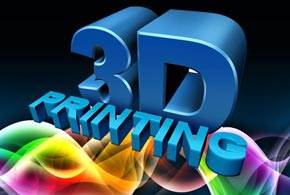Spending in the global 3D printing market will hit $35.4 billion in 2020, up from $15.9 billion in 2016, according to the latest predictions from IDC.
Global revenue in the growing 3D printing market is expected to more than double by 2020 to $35.4 billion, with printers and printer materials driving almost half of the total, while software and services will drive the rest.
That’s the conclusion of a new 3D printing report by analyst firm IDC, which forecast that the market segment will more than double by 2020 from the current $15.9 billion in revenue forecast for the segment in 2016. That rise in revenue represents a compound annual growth rate of 24.1 percent through 2020.
3D printers have been used in industrial and commercial applications for several decades by a wide range of product manufacturers, aerospace companies and others to quickly design and produce prototypes, molds, one-off parts and more without having to invest lots of money and time, according to an earlier eWEEK story. Major manufacturers of 3D printers include Stratasys, 3D Systems, ExOne, EOS, Concept Laser, Arcam, Beijing Tiertime and XYZprinting. Top-of-the-line industrial 3D printers can sell for as much as $5 million, while consumer-based devices can be purchased for as little as $499 from other smaller vendors.
“Customer spending on 3D printing capabilities is following the market away from mass market consumer printers towards holistic solutions that enable higher-end—and more profitable—use cases,” Christopher Chute, an IDC analyst, said in a statement. “As the market for printers, materials and services matures, IDC expects new 3D printing capabilities to enable a next-wave of customer innovation in discrete manufacturing, product design, and life sciences.”
IDC predicts that the most popular use cases that will drive the highest revenues for 3D printing in 2016 include some $4 billion for automotive design rapid prototype printing and some $2.4 billion for aerospace and defense parts printing, according to the report. Also looming as a strong market is dental printing, the report states.
“IDC expects the worldwide 3D printing market to continue its rapid expansion over the next several years, driven by the need to reduce manufacturing cycle times and to reduce prototyping costs,” Keith Kmetz, another IDC analyst said in a statement. “This growth will be fueled by an explosion of 3D printer manufacturers from around the world, seeking to capitalize on the anticipated growth in this market with faster printers that offer better quality output at lower prices.”
Healthcare and professional services will continue to be strong users of the technology, while retail users will experience the greatest revenue growth and become the fourth largest user of the technology by segment by 2020, the report continues. “Meanwhile, revenues from consumer 3D printing will grow modestly as this market has already matured,” the report added.
The data was reported as part of IDC’s Worldwide Semiannual 3D Printer Spending Guide.
HP joined the 3D printing marketplace when it announced in April 2015 that it would be building and selling the devices for business and industrial users.
In the past five years, 3D printing has been growing much faster as enterprises of all sizes find out they can buy a device for as little as $500 and begin trying out new ideas they never dreamed of in the past. Much of the latest enthusiasm for 3D printing comes from a blooming hobbyist or “maker” movement that has helped bring down the cost of smaller devices to where companies of any size can now afford to try one.
3D printers typically work by laying down layer upon layer of material to gradually build up a part until it is complete. There are seven different technologies used in 3D printers that work with various materials, including plastics and metals.







